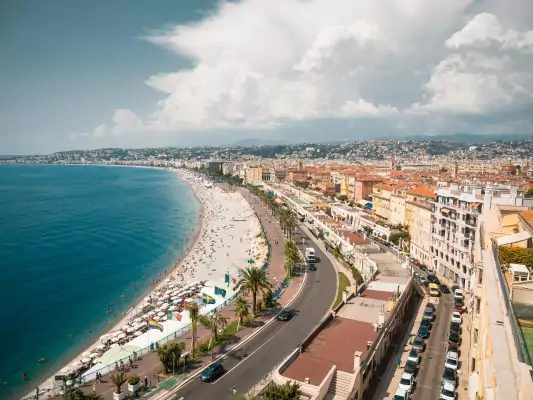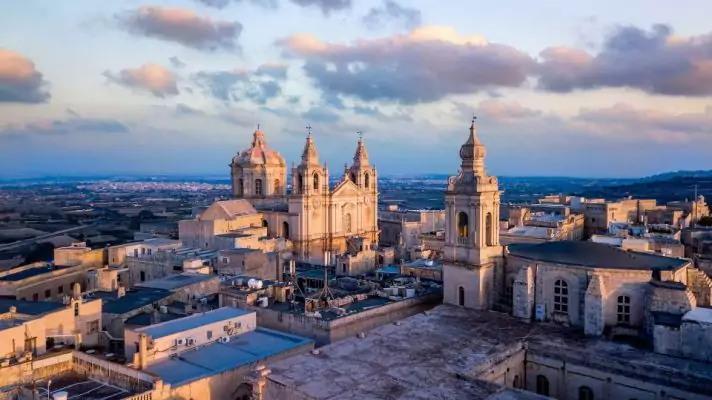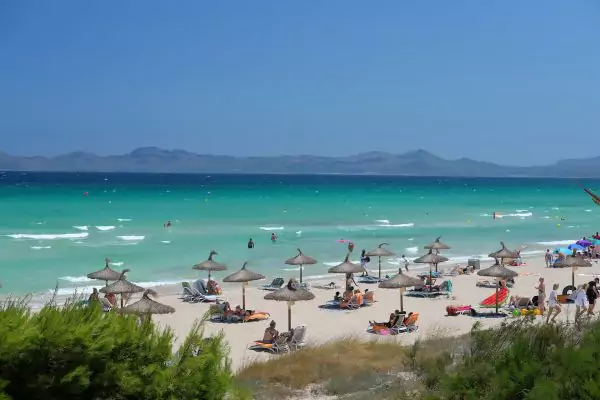Peru 8-Day Itinerary – What to See and Do in One Week

Best things to see and do in Peru in one week. Discover the country’s most famous landmarks and tourist hotspots in our Peru 8-day itinerary!
This Peru 8-day itinerary is a part of our broader travel guide for the country. We recommend you check it out for the best travel tips and the most accurate information on transportation, hotels, restaurants and safety in Peru.
Peru 8-Day Itinerary – Where to visit in Peru in 1 week
Well, considering how big the country is and the time you will inevitably spend on the road, 8 days in Peru is too short for anyone keen on exploring the Land of the Incas. However, if one week is all you have and you’re determined to visit this legendary destination, we’re here to help you make the most of your experience. To do so, you’ll need to keep up the pace, even if you only end up visiting the “essentials”, such as the vibrant capital of Lima, the historical Andean town of Cusco (including the day trips to Machu Picchu and the Sacred Valley), and the beautiful colonial city of Arequipa. Even so, get ready to take at least a couple of domestic flights to help you avoid wasting time on long bus journeys.
That being said, if you are looking for more comprehensive itineraries and have some additional time in hands, feel free to have a look at our extended guides to Peru:
- Peru 12-Day Itinerary – Best Places to Visit in the Country
- Peru 16-Day Itinerary – Highlights of Two Weeks in Peru
So, without further ado, here are the cities, places and tourist attractions you should visit in an 8-day itinerary through Peru:
Peru 8-Day Itinerary: Day 1 – Lima

Fresh off the plane in Lima, you’ll spend your first day in the country slowly getting acquainted with the many charms of Peru. Far from the stereotypical images of alpacas, Incan ruins and colorful indigenous attires, the capital Lima is a world apart from the rest of the country, as about one-third of Peru’s total population lives here. Nevertheless, the gigantic metropolis also has its moments, usually present through the colonial architecture of the downtown area or the modern coastline districts of Miraflores and Barranco. In fact, your first stop will take place precisely in the Centro Histórico, the first area of the city to be taken by the Spaniards and developed according to their will and customs. Although the vast majority of the original buildings were demolished during an earthquake in 1746, this remains the oldest and most picturesque part of Lima, centered around Plaza de Armas. Surrounded by the Lima Metropolitan Cathedral, probably the most important building in the city, the Archbishop’s Palace, and the Palacio del Gobierno, the official residence of the President, this square is considered the heart of the city. Still in the Centro Histórico, it is also worth visiting the Convent of San Francisco and its catacombs, as well as the Convent of Santo Domingo, one of the most beautiful and historic sites in the capital. While strolling through the old town, we also recommend that you walk along the pedestrian street Jirón de la Union, which leads to San Martin Square.
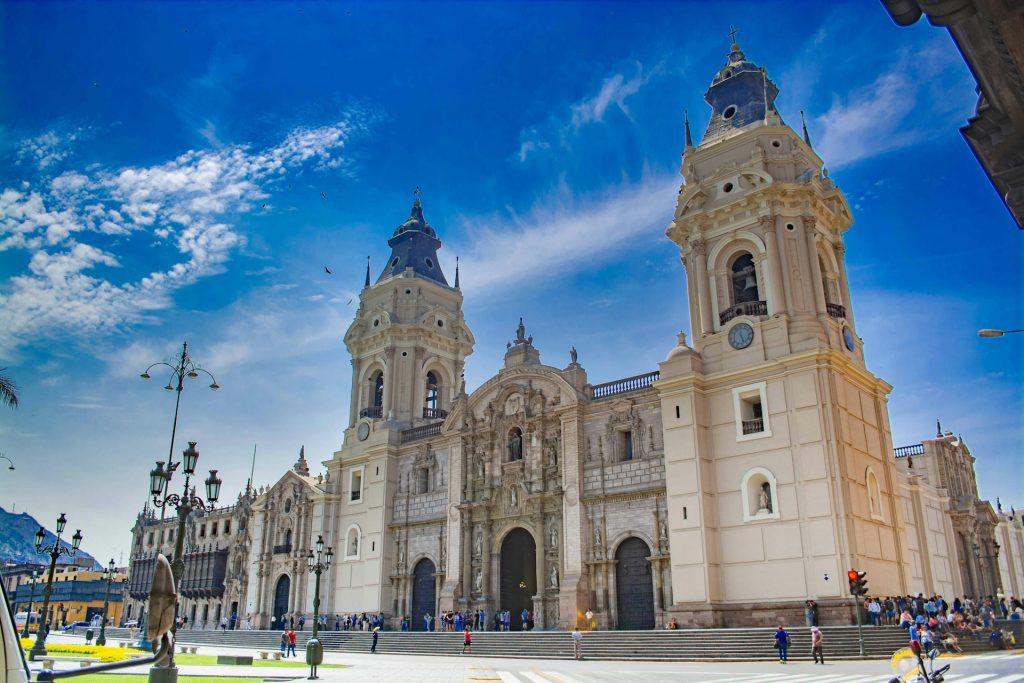
After exploring the older side of Lima, the afternoon will be dedicated to a relatively more modern and urban taste, starting at the Magic Water Circuit, inside Parque de Reserva. Comprised of 13 distinct fountains, this is the largest complex of its kind in the world, displaying an impressive show of water jets dancing to different tunes, similar to what you’d find in more iconic places, like Barcelona or Dubai. Further south, near the Pacific coast, your first day will end in the district of Miraflores, considered one of the trendiest and safest in Lima. In addition to the Malecón de Miraflores, a seaside boardwalk boasting phenomenal views of the area (the best part taking place in the so-called Love Park), this is also the place where you’ll have your very first contact with the legendary Peruvian archaeological sites. Hidden among the concrete jungle of high-rise buildings that make up most of southern Lima, Huaca Pucllana (S/ 15) is a complex formed by a pyramid-shaped temple. Curiously, this site is even older than the famous Incan ruins in the Andes, having been built by an earlier native civilization. Truth be told, there would be much more to see and do in Lima, but considering how tight this itinerary already is, all least you’ll get a taste of the capital city before moving on to more popular cities and towns.
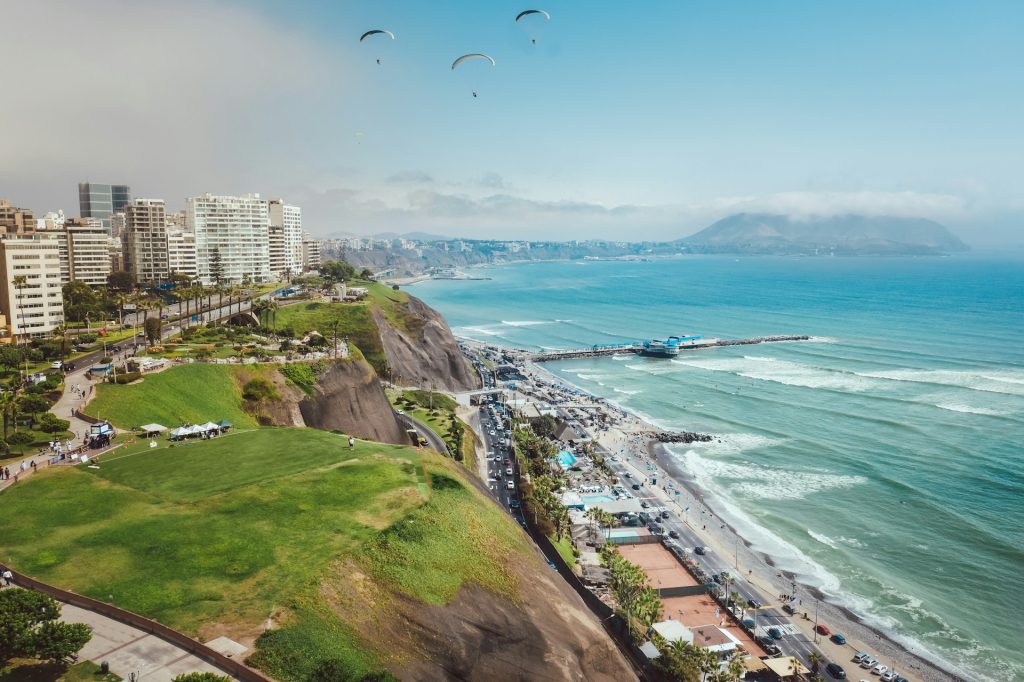
First day wrap-up:
- Centro Histórico
- Plaza de Armas
- Lima Metropolitan Cathedral
- Archbishop’s Palace
- Palacio del Gobierno
- Convent of San Francisco
- Convent of Santo Domingo
- Jirón de la Union
- San Martin Square
- Magic Water Circuit
- District of Miraflores
- Malecón de Miraflores (Love Park)
- Huaca Pucllana
Where to eat in Peru – Best restaurants in Lima
- Juanito de Barranco (Peruvian traditional)
- Al Toke Pez (Peruvian traditional – ceviche)
- Cevicheria Miramar Miraflores (Peruvian traditional – ceviche)
- El Cebiche de Ronald (Peruvian traditional – ceviche)
- O. Asian Kitchen (Asian Food)
- Burrito Bar (Mexican)
- Arepa Café (arepas)
- Bao! (bao)
- La Lucha Sangucheria (meat sandwiches)
- Mercado 28 (mercado)
Peru 8-Day Itinerary: Day 2 – Flight to Cusco

Considering the lengthy 20-hour bus journey between Lima and Cusco (possibly even longer), and the extensive road trips already planned for the rest of the itinerary, it’s highly advisable to go for a domestic flight between the two cities. After all, both Lima and Cusco are served by domestic and international airports, with airlines like LATAM Peru, Sky Airline or JetSMART offering multiple daily connections between them. Furthermore, similar to many other South American countries, these flights are partially subsidized by local authorities, ensuring consistently stable and affordable fares (around €40,00 to €50,00), especially when booked in advance. The flight takes less than 1h30.
Although this option will allow you to arrive in Cusco early in the morning, it’s extremely important not to make any efforts for the remainder of the day. Located at an altitude of 3400 meters, plenty of tourists suffer from altitude sickness when visiting Cusco. Without proper acclimatization, it’s quite common for travelers to experience headaches, nausea, shortness of breath and/or extreme fatigue. To mitigate these symptoms and get ready to explore as quickly as possible, it’s crucial to stay hydrated, drink coca tea (a local tip), and, above all, avoid strenuous activities over the first 2 days – which is why today you will simply rest while you get used to the altitude.

Cusco Tourist Ticket – Which one should I buy?
In order to streamline ticket sales and generate additional revenue, Peru’s Ministry of Tourism has introduced several different tourist circuits in Cusco, with a single ticket granting you access to a pre-determined set of local tourist attractions. Created under the designation of Cusco Tourist Ticket (or Boleto Turístico General, in Spanish), the main ticket is priced at S/ 130 and is valid for 10 days, allowing you to visit the following sites scattered around Cusco and the Sacred Valley:
- Regional Historical Museum
- Contemporary Art Museum
- Popular Art Museum
- Qurikancha Museum (the museum, not the site)
- Qosqo Native Art Center
- Inca Pachacutec Monument
- Sacsayhuaman
- Qenqo
- PukaPukara
- Tambomachay
- Ollantaytambo
- Moray
- Pisac
- Chinchero
- Tipon
- Piquillacta
But… is it worth it? Looking at upcoming days of our adventure, the truth is that less than half of the included sites are part of the itinerary. On the other hand, there are about a dozen extra locations that require paid entry and are not part of the Cusco Tourist Ticket. All things considered, buying the “boleto” wouldn’t really be worth it as opposed to buying individual tickets. Aware that most visitors would fall into the same situation, the authorities have therefore launched three partial versions of the Cusco Tourist Ticket, splitting the original into three optional circuits:
- Circuit I (S/ 70 – valid for 1 day)
- Sacsayhuaman
- Qenqo
- PukaPukara
- Tambomachay
- Circuit II (S/ 70 – valid for 2 days)
- Regional Historical Museum
- Contemporary Art Museum
- Popular Art Museum
- Qurikancha Museum (the museum, not the site)
- Qosqo Native Art Center
- Inca Pachacutec Monument
- Tipon
- Piquillacta
- Circuit III (S/ 70 – valid for 2 days)
- Ollantaytambo
- Moray
- Pisac
- Chinchero
Now, here’s the trick! Since the government’s intention has always been to push the Boleto Turístico General down everyone’s throats, some of the attractions don’t even sell individual tickets, forcing you to buy at least one of the circuit tickets. For example, if we look at Circuit I, we will only be visiting Sacsayhuaman. However, it’s not possible to buy tickets just for this specific site, so the option is either not to visit the ruins at all or to pay the full sum for the circuit ticket… even if you don’t visit any of the remaining sites! On the other hand, you will be visiting all the attractions in Circuit III when you go to the Sacred Valley, so this partial ticket is a must-have. However, when you do the math, you’ll notice the price for the two circuits totals S/ 140, which is already S/ 10 more expensive than the Boleto Turístico General. Basically, the choice has already been made for you.
Therefore, since this day will be dedicated to resting and acclimatizing to the altitude, you can take an hour of your time to buy the Cusco Tourist Ticket you’ll be using over the next few days. You can do so at the COSITUC Central Office, as long as you’re accompanied by your ID. Payment is made in cash (and they only take Peruvian Nuevo Sol).
Second day wrap-up:
- Flight to Cusco
- Acclimatization to altitude
- Buy Boleto Turístico General
Peru 8-Day Itinerary: Day 3 – Cusco

After a first day of adjusting to the altitude, you will slowly resume your sightseeing activities by sticking to the steep streets of Cusco. However, that doesn’t mean the day will be any less exciting, as the city boasts an historic center that’s nothing short of spectacular, rivaled in beauty only by the colonial charms of Arequipa (we’ll get there). Originally the heart of the Incan Empire, much of Cusco’s native architecture was later on repurposed by the Spanish. In fact, one of the clearest examples of this practice can be found in the Convent of Santo Domingo (S/ 15, including access to Qurikancha), a church built upon an Incan temple dedicated to the sun deity. Once completely covered in gold, all that remains of the Qurikancha (the temple’s original name) are a few rooms and the stone base, as the precious gem was obviously looted by the Spanish. Furthermore, and in yet another excellent example of this clash of civilizations, the walls of the ancient Incan citadel can still be partially seen throughout the old town, especially along the streets of Loreto and Hatunrumiyoc, two ancient pedestrian thoroughfares that have retained their pre-Columbian layout.

Both the convent and what remains of the city walls are part of the Centro Histórico, the quarter where visitors can find most of Cusco’s tourist attractions, such as the monumental Plaza Mayor. Regarded as the city’s main feature, the square is home to the Cusco Cathedral (S/ 40) and the Church of la Compania de Jesus (S/ 10). Nearby, be sure not to miss the Basilica of La Merced (S/ 20) and to visit at least one of the several local museums dedicated to the arts and the customs predating the arrival of the “conquistadores”, such as the Museum of Pre-Columbian Art (S/ 10), the Inca Museum (S/ 10), and the Casa Concha Museum (S/ 20). Leaving the historic center behind, you will then enter the district of San Blas, an alternative quarter that has been gaining traction among tourists. While maintaining the lovely streets and old architecture of the Centro Histórico, this corner of Cusco is much quieter, with fewer crowds and a great collection of trendy restaurants and bars. While the best activity is to simply relax and wander around, you can also take a short walk to the Church of San Blas (S/ 20) and enjoy the San Blas Viewpoint, an observation platform with some of the best views of Cusco.

Finally, for a first taste of the country’s legendary Native American ruins, you will climb the hills to the north of the city and visit Saqsaywaman (included in the Boleto Turístico General), the most important archaeological site in Cusco. Originally, the shape of Cusco’s walls formed the design of a puma, and Saqsaywaman layout was supposed to mimic the head of the animal. Although, like in many other Incan sites, it’s not possible to fully attest the purpose of the site, at least you get to see parts of the defensive structure and its impressive stonework. Although the ongoing process of acclimatizing to the altitude will leave you exhausted and ready to head back, if you’re willing to make one last push, you’ll still have time to visit the Qenqo Archaeological Site, about a 20-minute walk away. After all, since you’ll have to pay for the Boleto Turístico General anyway, you might as well put it to good use!

Third day wrap-up:
- Centro Histórico
- Convent of Santo Domingo
- Qurikancha
- Loreto Street
- Basilica of La Merced
- Plaza Mayor
- Cusco Cathedral
- Church of la Compania de Jesus
- Museum of Pre-Colombian Art OR Inca Museum OR Casa Concha Museum
- Hatunrumiyoc Street
- District of San Blas
- Church of San Blas
- San Blas Viewpoint
- Saqsaywaman
- Qenqo Archaeological Site
Where to eat in Peru – Best restaurants in Cusco
- Ceviche (Peruvian traditional)
- La Huerta del Tata (Peruvian traditional)
- Cuy (alpaca meat and guinea pig)
- Tacomania (Mexican)
- Korma-sutra (Indian)
- UFO Asian Food (Asian food)
- El Encuentro (vegetarian)
- Chakruna Native Burgers (hamburgers)
- Jack’s (breakfast and brunch)
- Crepería & Backpacker La Bo’M (sweet and savory crepes)
Peru 8-Day Itinerary: Day 4 – Day trip to the Sacred Valley
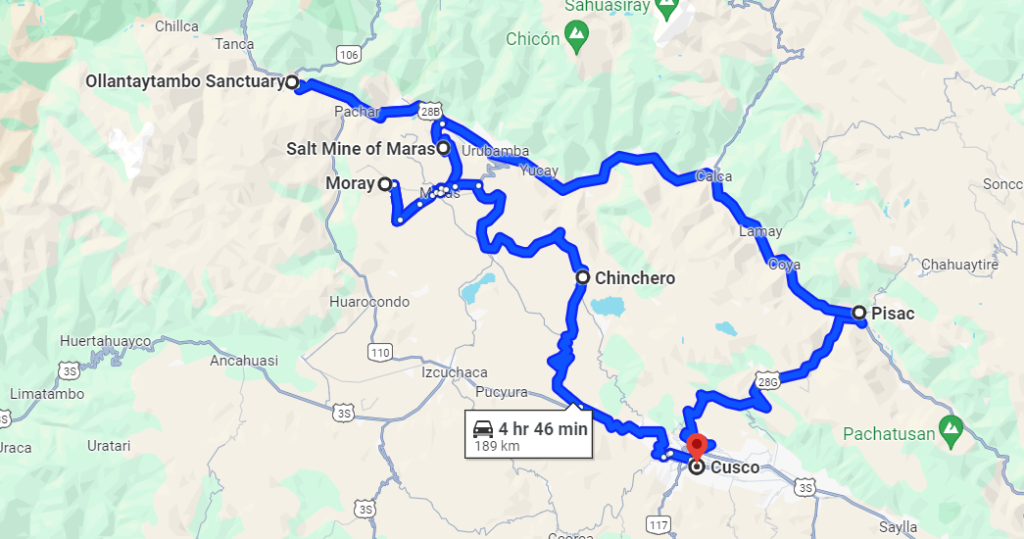
Now that you’ve already gotten to know Cusco and had enough time to acclimatize to the altitude, it’s finally time to leave the city and explore the multitude of pre-Columbian ruins that have turned this region into one of the world’s most coveted tourist destinations! And what better way to kick things off than with a visit to the Sacred Valley – the mystical name given to the Urubamba Valley – home to a seemingly endless collection of Incan ruins, colorful markets and traditional Andean villages. While we usually lean towards independent travel, we got to recognize that sometimes joining a guided tour is the way to go. In this case, should time allow it, there’s no doubt that taking the local buses (colectivos) and spending at least 2 days exploring the valley would provide a richer and overall better experience. However, if you only have 1 day available, then it’s best to choose one of the countless tours and try to visit as many different ruins as possible. Before we delve into what you can expect from this adventure, here are some tours worth considering:
- Sacred Valley with buffet lunch: Chinchero, Moray, Maras Salt Mines, Urubamba, Ollantaytambo and Pisac
- Small group Sacred Valley tour with buffet lunch: Chinchero, Moray, Maras Salt Mines, Urubamba and Ollantaytambo
- Sacred Valley ATV tour: Moray and Maras Salt Mines

There are many great sites worth exploring scattered throughout the valley region, but the longer tours usually stop by 6 different places, starting with Chinchero. Although the highlight of the day is undoubtedly the Incan ruins of the Sacred Valley, taking a moment to observe daily life unfolding in the Andean villages is also an important part of the experience, which is why picturesque Chinchero must not be skipped. Besides, considering the altitude, the views from above the valley itself are breathtaking… well, literally, as the air is even thinner than in Cusco! Beginning the descent into the valley, tours usually stop i at the Moray Archaeological Site, one of the most peculiar Incan traces of the day. From above, the site resembles more of an amphitheater, with the rows progressively getting wider and wider around the center, just like what you usually find in large football stadiums. However, this was actually an Incan agricultural field, built this way so that each layer can have its very own microclimate, this making it easier for the population to optimize their crops. Not far away from Moray, it is then time to visit the Maras Salt Mines (S/ 10), an incredible sight featuring thousands of small pools carved into the mountainside. Some of these pools are fed by an underground spring of saline water, with the excess water flowing into the others like a cascade. When all pools are filled, the water flow is then interrupted, allowing the water in the pools to dry up and form salt crystals. Amazingly, this salt extraction method dates back to civilizations even older than the Incas, who kept on with the practice!

After a lunch stop in Urubamba, which despite being the main “city” of the valley doesn’t really offer much to see or do (besides the local market), the journey heads on to the Ruins of Ollantaytambo, perhaps the most impressive in the region. Second only to Machu Picchu, this complex of temples, baths and fortresses is one of the great cultural legacies of the Incan Civilization, with the village itself having preserved virtually all of its structures from that period, unlike Cusco, whose original walls, paths and canals have either disappeared or been largely altered. In fact, the small quarter of Qosqo Ayllu (in the town of Ollantaytambo) is probably the best kept sample of a traditional pre-Columbian village, although most tours don’t allocate extra time for this place. The same goes for Pinkuylluna and Qelloraqay, other archaeological ruins in Ollantaytambo that are rarely visited. Lastly, while making your long way back to Cusco, most tours make a stop at the Pisac Archaeological Park, the only ruins in the Sacred Valley capable of rivaling the magnitude and importance of Ollantaytambo. As a final note, I would like to remind you that all attractions whose prices are not specified are covered by the Boleto Turístico General.
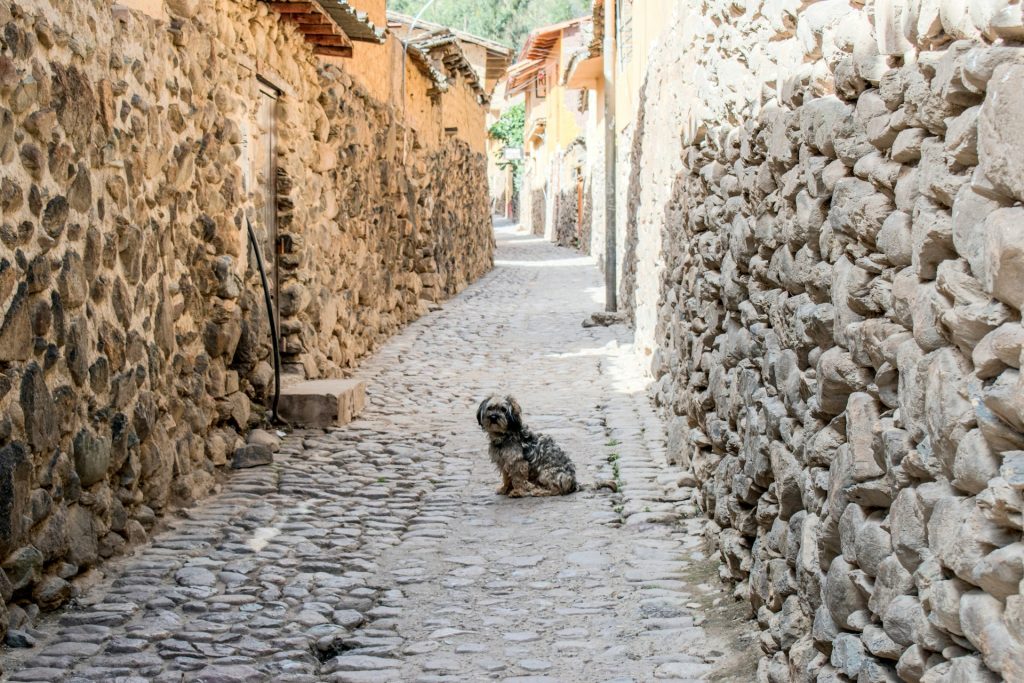
NOTE: If you have some time to spare and prefer to visit the Sacred Valley independently, you can head to this terminal in Cusco and catch a local bus/colectivo to Pisac (S/ 5). After visiting the Archaeological Park, you can hop on another colectivo (S/ 5) heading to Urubamba, where you’ll spend the night. The next morning, we recommend negotiating a taxi service to take you to Moray and the Maras Salt Mines and back to Urubamba before lunch (expect to pay around S/ 75 for transportation and waiting time). Finally, hop on another colectivo (S/ 3 or 4) to Ollantaytambo, whose ruins you’ll visit in the afternoon. The next morning, just catch a local bus back to Cusco (S/ 12 to 15).
Fourth day wrap-up:
- Sacred Valley
- Chinchero
- Moray Archaeological Site
- Maras Salt Mines
- Urubamba
- Ollantaytambo (Main Ruins, Qosqo Ayllu, Pinkuylluna and Qelloraqay)
- Pisac Archaeological Park
Where to eat in Peru – Best restaurants in Ollantaytambo
- Amanto – Cocina Sagrada (Peruvian traditional)
- Caminos del Inka (Peruvian traditional)
- Chuncho (Peruvian traditional)
- Mawic (Peruvian traditional)
- Apu Veronica (Peruvian traditional)
- Don Dante (varied)
- Apu Plaza Inn (varied)
Peru 8-Day Itinerary: Day 5 – Day trip to Machu Picchu

Continuing your journey through the remnants of the great Incan Empire, we have finally come to the day you’ve been so eagerly waiting for. My friends, welcome to Machu Picchu! The crown jewel of Peru and, dare I say, the entire American continent, this legendary Incan city was designated one of the Seven Wonders of the World. However, let’s rewind a bit and start off by understanding how to get there. After all, given the immense popularity of this site and its relative isolation, transportation has become quite the lucrative business.
That’s because Aguas Calientes, the nearest town to Machu Picchu, has no road connections to the outside world, leaving you entirely dependent on the train. That said, the easiest way to visit Machu Picchu requires taking a train from Peru Rail or Inca Rail, the two private railway operators in the Peruvian Andes. However, and to no surprise, this is also the most expensive option, with fares from Cusco to Aguas Calientes starting at S/ 450 round trip. While some services offer a direct train between the two towns, the cheaper options are bi-modal, composed of a bus journey from Cusco to Ollantaytambo, where you’ll then transfer to the train heading to Aguas Calientes, all on a single ticket. The total journey will take around 4 hours (one way). However, despite the destination being labeled “Machu Picchu”, it’s important to note that the final station is actually located in Aguas Calientes, a good two-hour uphill walk from the entrance to the archaeological city. So, unless you’re up for the hike, you’re basically a metaphorical hostage of Consettur, the only bus company operating the route. Tickets for the 30-minute journey cost S/ 90 round trip (half if you’re only traveling one way) and can be purchased online or upon arrival.

The low-cost option is significantly cheaper but also more time-consuming and quite exhausting. Regardless, if you want to spend as little as possible, you can catch a bus from Cusco to Hidroelectrica, the nearest town to Aguas Calientes with a road connection. These tickets are available through RedBus and cost S/ 120 round-trip. From there, your only option is to hike the 10 km trail to Aguas Calientes along the train tracks. Considering the bus journey alone takes almost 8 hours, this will require you to spend the night in Aguas Calientes, where the cheapest double room stands at around S/ 90 (S/ 45 per person). As a result, if you compare the costs of the two options between Cusco and Aguas Calientes, this second alternative (even with an extra night) saves you S/ 285 per person compared to the cheapest train (bi-modal). However, it’ll end up requiring a lot more time and energy – it all depends on your priorities!

Now that we’ve covered transportation, let’s turn our attention to another needlessly complicated saga: the tickets! While we all have the same stereotypical image of Machu Picchu hovering around our minds, the truth is that the archaeological park is absolutely massive, with over 60 different ruin areas and 400 km of trails. Even if we stick to the areas that are open to the public, there are still 60 kilometers to explore. Still, given the usual overcrowding of tourists in the most popular areas, authorities completely overhauled the entrance system back in 2019. Whereas previously you could visit whatever you wanted, whenever you wanted and with no time constraints whatsoever, now it’s mandatory to purchase tickets in advance, setting up a specific date and timeframe for your visit, and pre-selecting one of the existing circuits. You can buy your tickets through the website of Peru’s Ministry of Culture, with the following versions currently available:
- Llaqta de Machu Picchu: The “classic” ticket that includes access to the most popular sites of the Incan city, allowing you to pick any of the 4 existing circuits. For first-time visitors, it’s recommended to choose Circuit 2, as it’s the most comprehensive and includes the ascent to the lookout point offering THAT iconic postcard picture of Machu Picchu. Price: S/ 152
- Machu Picchu + Huayna Picchu: Allows you to visit the main ruins following only Circuit 4 and climb the mountain north of the archaeological site. Price: S/ 200
- Machu Picchu Mountain: Allows you to visit the main ruins following only Circuit 3 and climb the mountain south of the archaeological site. Price: S/ 200
- Machu Picchu + Huchuy Picchu: Allows you to visit the main ruins following only Circuit 4 and climb the smaller mountain north of the archaeological site. Price: S/ 152
- Machu Picchu + Inca Bridge: An enhanced version of the classic ticket. Allows you to explore the main ruins through Circuit 1 or Circuit 2 and also make a detour to the Inca Bridge. Price: S/ 152

Tickets sell out quite easily, so it’s recommended to purchase them at least 2 months in advance. Additionally, it’s important to clarify that once you’ve chosen a circuit, you cannot switch to another, and if you’re late and miss your time window, you won’t be allowed entry at a different time with the same ticket. Officially, each ticket holder can only stay at Machu Picchu for a maximum period of 3 hours.
Fifth day wrap-up:
- Machu Picchu
Where to eat in Peru – Best restaurants in Aguas Calientes
- The Peruvian Flavor (Peruvian traditional)
- Los Ponchos (Peruvian traditional)
- Restaurante Tupana Wasi (Peruvian traditional)
- Mercado Aguas Calientes (market/street food)
- Tao Dulce Salado (coffee shop/light meals)
- El Valle Mapi (varied)
Peru 8-Day Itinerary: Day 6 – Day trip to Rainbow Mountain
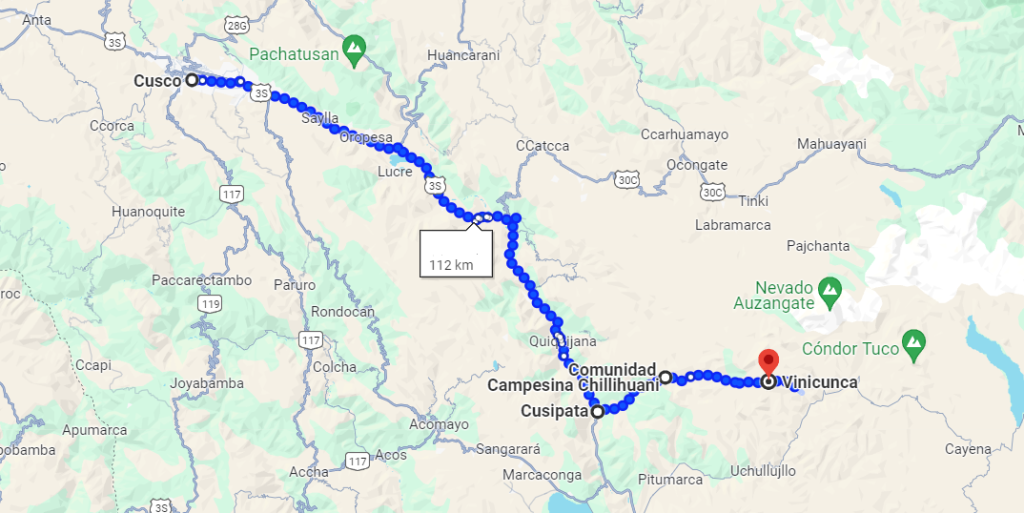
As you near the end of your time in Cusco, there’s one last day trip awaiting you from this Andean hub. Locally known as Vinicunca, one can’t leave the Andes without completing the hike to the Rainbow Mountain. If the name doesn’t ring any bells, these are the peaks that have been featured on Instagram feeds all over the world, attracting visitors with their colorful stripes that almost seem to have been painted onto the landscape (hence the nickname). Truth be told, and despite their breathtaking beauty, these colors are actually a result of climate change, being caused by melting nearby glaciers. Finally, it’s no coincidence we’ve saved this adventure for your final day in Cusco, since these mountains sit at an astonishing altitude of 5000 meters, which is why it’s so important for your body to be fully acclimatized. From the trailhead to the summit of Vinicunca, expect a 90-minute hike (plus the time to return).
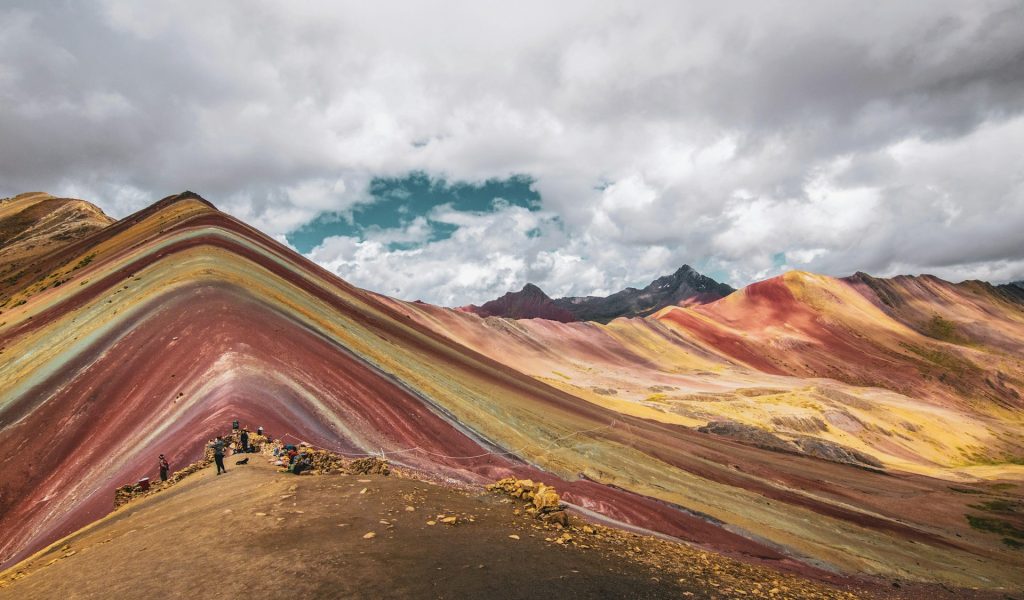
Located about 150 km away from Cusco, joining a tour is obviously the easiest way to visit Rainbow Mountain. In fact, if you’re traveling solo, it ends up costing about the same as the independent option (for the cheaper tours). So, if you’d rather skip the hassle, you can easily find tours online (like this one or this one). However, be prepared for a somewhat impersonal, highly touristy experience – and if I may – not quite as adventurous as the DIY route. However, before heading down that road, it’s important to note you’ll have a flight to Arequipa at the end of the day, so it is of the utmost importance that you make it back to Cusco in time! If you’re not in a position to guarantee that that will be the case, then you might as well go with the tour. Now, ready for the independent alternative? If you prefer to do things your way, start by catching a colectivo from Cusco to Sicuani, making sure to tell the driver you’ll be getting off at Cusipata. This journey takes around 2h30 hours and costs between S/ 10 to 15, departing from this bus terminal in Cusco. Once in Cusipata, you’ll have to negotiate a taxi to Chillihuani, the starting point of the trail to the top of the Vinicunca. Expect to pay around S/ 120 for the round-trip + waiting time (you’ll need about 3 hours). Also, remember that all visitors must pay S/ 30 for admission to the reserve if they want to complete the trail. Back in Cusipata, you just need to hop on another colectivo to Cusco, where you’ll catch the aforementioned flight to Arequipa.
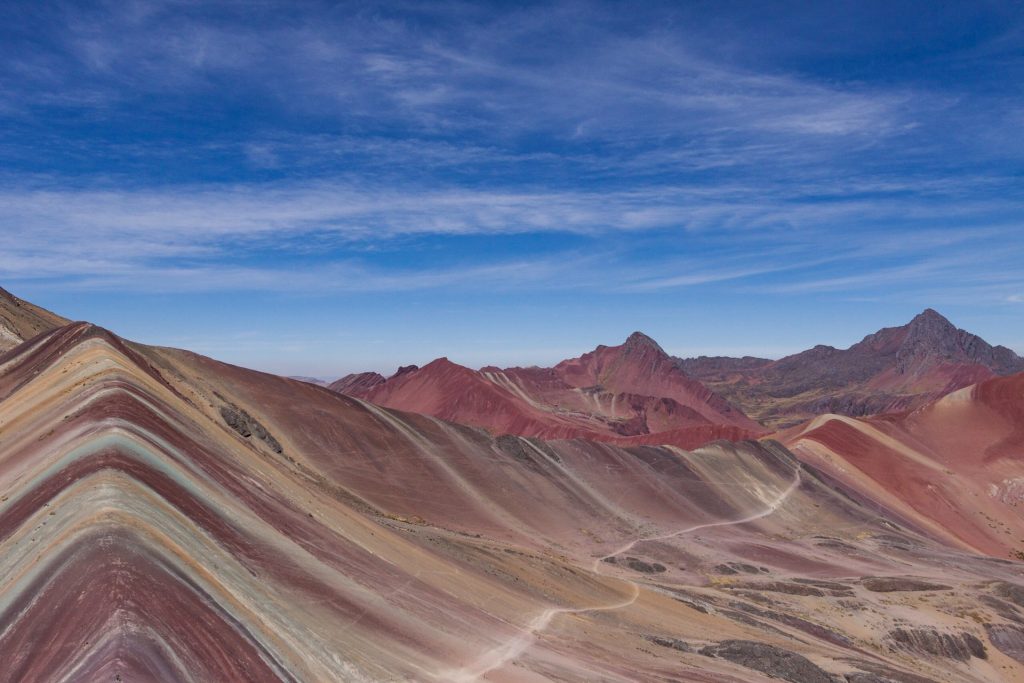
Sixth day wrap-up:
- Rainbow Mountain
Peru 8-Day Itinerary: Day 7 – Arequipa

Nicknamed the “White City” for the dominant color on most of its historic buildings, Arequipa is considered one of the most beautiful places in Peru, as well as the town with the best-preserved colonial legacy. As such, today you’ll explore its splendid historic district, starting off at the San Camilo Market, one of the biggest markets in the country. Aside from its traditional produce section, this place is quite famous for the myriad of stalls offering roasted cuy… the local designation for guinea pigs! Next up, venture into the heart of the city, unsurprisingly called Plaza de Armas, where you can visit the imposing Basilica Cathedral of Arequipa (S/ 10). While Peru has its fair share of magnificent churches, this is one of the grandest and most celebrated, in part thanks to how the sun beams gloriously light up its traditional white stone façade. Moreover, don’t miss the chance to explore the nearby Church of La Compañía, as well and the Andean Sanctuaries Museum (S/ 25). While it’s true you will have become a real expert in all-things-Incan by now, this museum remains one of the most interesting and captivating you’ll find in this itinerary, showcasing relics from various Andean indigenous cultures. Among its treasures, the famous Mummy Juanita definitely stands out. For those unfamiliar, this is the perfectly preserved body of a teenage girl who was sacrificed during the Incan Empire.
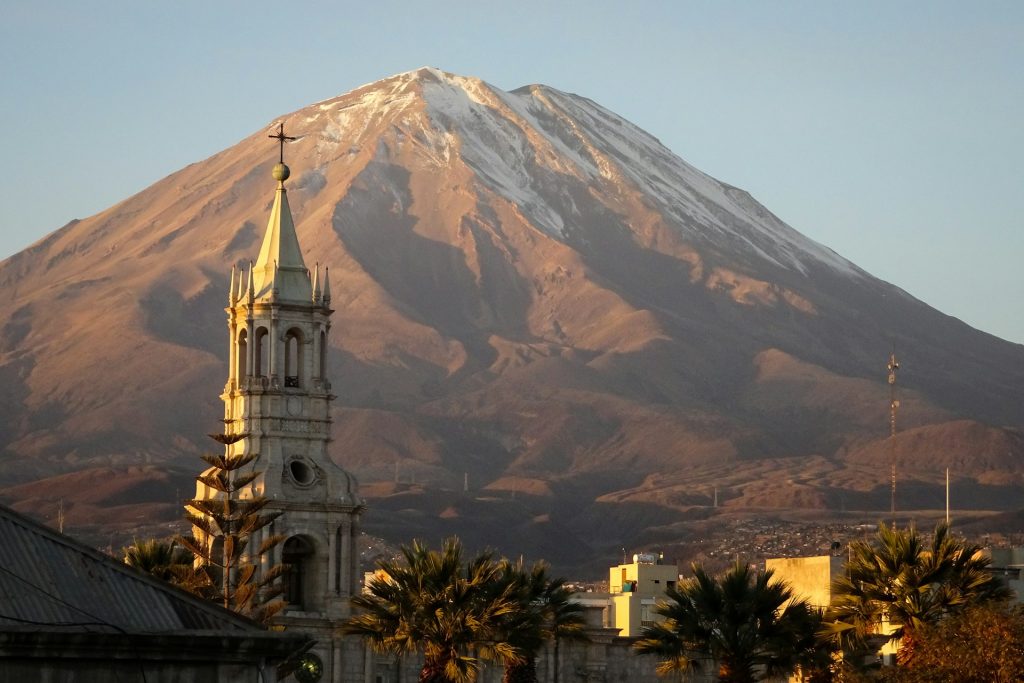
Back in the streets, your next stop will be the Monastery of Santa Catalina (S/ 45), a religious complex built like a fortified citadel, famous for its secret courtyards, winding alleys and colorful buildings. Nearby, though far less impressive, the Monastery of Santa Teresa is also worth seeing. Then, you’ll venture outside the old town and enter the neighboring district of San Lazaro, a picturesque cobblestone street colonial “barrio” with a much calmer atmosphere (especially around Bayoneta, Violin and Los Cristales streets). Besides, this is also where you’ll find Mundo Alpaca, a biological zoo and museum where you can interact with these iconic Andean creatures and learn about their role in textile production from the very first civilizations in the region. A perfect stop for visitors of all ages! As the day is slowly coming to the end, you’ll cross Grau Bridge to the opposite bank of the Chili River and climb up to the Yanahuara Scenic Overlook. Home to the very best view in all of Arequipa, you can enjoy a breathtaking panorama of the old town with the majestic Misti Volcano in the background.

Seventh day wrap-up:
- San Camilo Market
- Church of La Compañía
- Andean Sanctuaries Museum
- Plaza de Armas
- Basilica Cathedral of Arequipa
- Monastery of Santa Catalina
- Monastery of Santa Teresa
- San Lazaro (Bayoneta, Violin and Los Cristales streets)
- Mundo Alpaca
- Grau Bridge
- Yanahuara Scenic Overlook
Where to eat in Peru – Best restaurants in Arequipa
- Cevicheria El Jayari (Peruvian traditional)
- Restaurante Sach’a (Peruvian traditional)
- La Abadia (Peruvian traditional)
- 13 Monjas (Italian)
- Espacio Lagom (Japanese)
- Kao Thai and Peruvian Cuisine (Thai-Peruvian fusion)
- Polleria el pio pio (barbecue chicken)
- La Lucha Sangucheria (meat sandwiches)
- Pasta Canteen (pasta)
- Omphalos (vegetarian)
Peru 8-Day Itinerary: Day 8 – Day trip to Colca Canyon
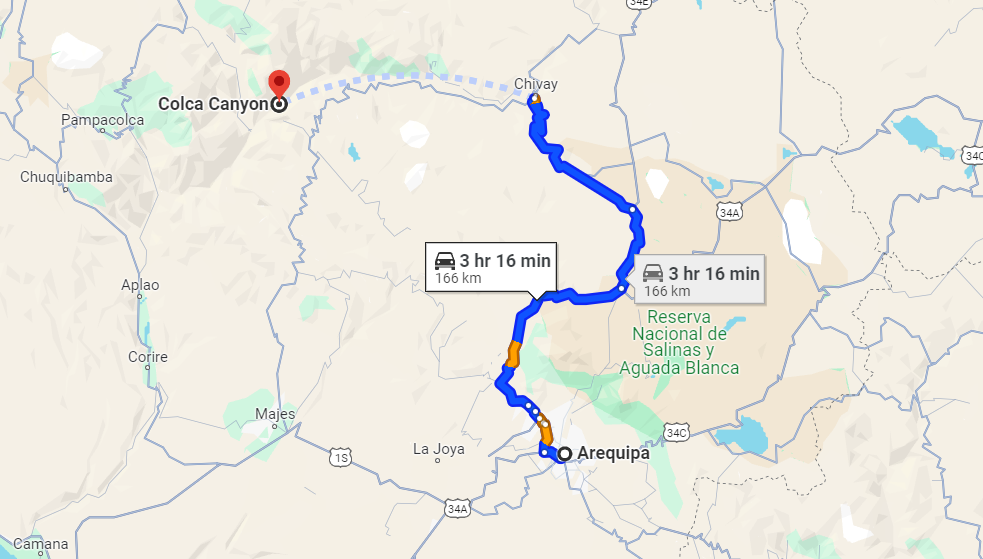
Though we’ve already made it to your last day in Peruvian lands, you still have quite the adventure ahead of you! When looking at what Peru has to offer when it comes to unspoiled nature (i.e., with no human intervention), the immense and overwhelming Colca Canyon definitely stands out, alongside the likes of Lake Titicaca, Rainbow Mountain and the Peruvian Amazon! Fortunately, this site is located about 200 km from Arequipa, meaning you can cross it off your bucket list as a day trip from the “White City”. Like many other attractions in the country, visiting the canyon independently can requite quite a lot of your precious time, which is why nearly all visitors choose to join a guided tour like this one. Most guided tours follow a similar structure, starting early in the morning (around 03h00) and ending late in the afternoon, and stopping by the Mirador Cruz del Condor, the town of Chivay and by a couple of traditional villages along the valley, before taking a detour through the Salinas y Aguada Blanca National Reserve. Many tours also offer a couple of optional side activities, like going for a soak in the Chacapi Hot Springs (S/ 15). Also, note you’ll have to pay an additional S/ 70 to enter the Colca Canyon.

However, none of these tours allow visitors to take a proper hike through the canyon, assuming most visitors will be happy with just taking in the views. Admittedly, this is still rather impressive – as the Colca Canyon is twice as deep as the legendary Grand Canyon – but it’s far from ideal for trail enthusiasts and outdoor junkies. That said, if you want to visit this place independently and spend at least two days completing different trails (hiking on a day trip is downright impossible), you will need to start by taking a bus or shared van from Arequipa to Cabanaconde (available on RedBus from S/ 35), the village where the most popular routes start. For first-timers, the best course is the loop circuit connecting Cabanaconde-San Juan de Chuccho-Sangalle-Cabanaconde. This trail is nearly 20 km long and can be completed in 2 days, with an overnight stay in one of homestays available in San Juan de Chuccho (or, if you hike at a good pace, in the eco-lodges of Oasis Sangalle, on the banks of the Colca River). Along the trail, you will pass by several viewpoints and local villages, making for a much more immersive experience, even if you technically visit less of the “tourist spots”. Ultimately, it all depends on what you value most! Once you make it back to Cabanaconde, just take another shared van (S/ 35) back to Arequipa. Although not particularly challenging or dangerous, the final uphill stretch between Sangalle and Cabanaconde is very tiring, so it’s important to be in decent shape and fully used to the altitude.
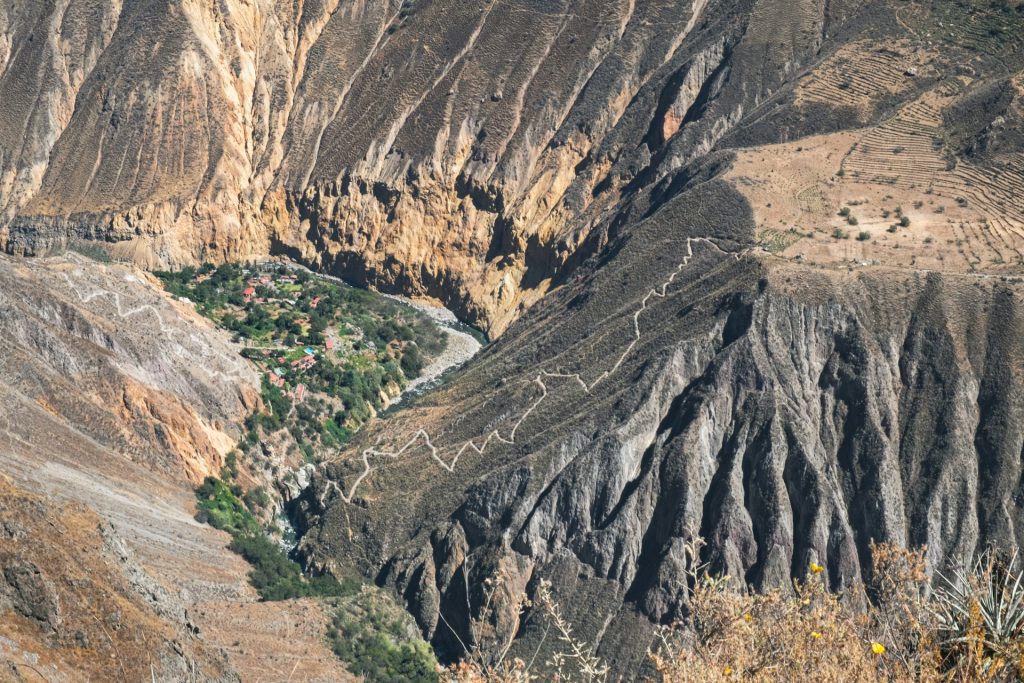
Be that as it may, the guided tour is the only viable option if you’re visiting Peru for just 8 days, considering you’ll have to make it back to Arequipa in time for your flight to Lima. Once in the capital, all there is left to do is board your flight back home across the Atlantic.
Eight day wrap-up:
- Colca Canyon
Traveling soon? Get your Holafly eSIM for seamless internet access in any destination. No more worrying about roaming charges or finding local SIM cards. Enjoy unlimited data and stay connected with ease. Order your Holafly eSIM now »
Heymondo offers a wide range of travel assistance insurance policies. They combine the best quality, service and price with various levels of coverage, so you’re covered on your weekend getaways and long trips. Buy insurance »





